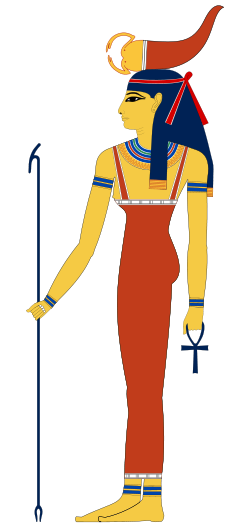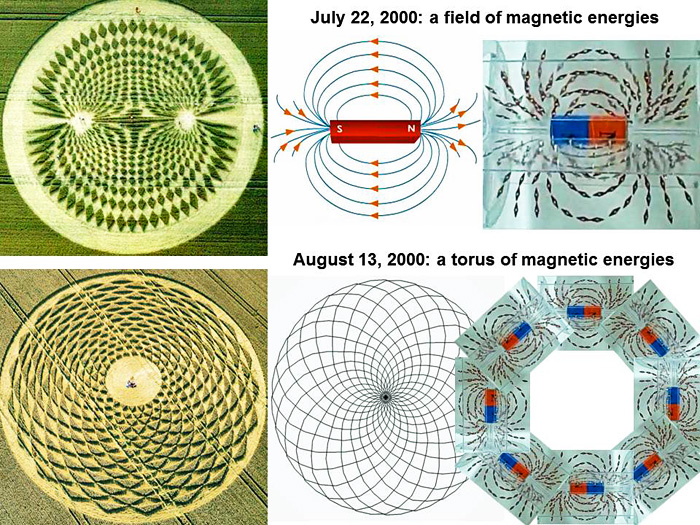|
Réponse |
Message 1 de 31 de ce thème |
|
actually found a Le Poulpe Pulpit in St Louis at the Shrine of St Joseph http://i3.photobucket.com/albums/y78/lovuian/Saint%20Louis/P2080320.jpgThe Rome of the West ....St Louis is calledIt is home to the Skull and Bones with the Butterfly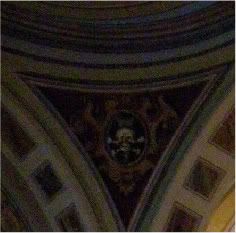 and it has the eight sided starhttp://i3.photobucket.com/albums/y78/lovuian/Saint%20Louis/P2080312.jpgAd maiorem Dei gloriam or ad majorem Dei gloriamis the Latin motto of the Society of Jesus, a religious order within the auspices of the Catholic Church. The motto is translated into English as "For the greater glory of God".The origin of the phrase is attributed to the founder of the Jesuits, Saint Ignatius of Loyola, In Georgetown University's Gaston Hall, the phrase is followed by inque hominum salutem, producing a longer phrase: "For the greater glory of God and the salvation of humanityThe abbreviation was frequently included in the signatures of Pope John Paul IIIt also has the S and P with the anchorif you take the Priory of Sion's insigniayou will see the number eight for infinity with the rope wrapped around the fleur de lisit is the number eight and it has the eight sided starhttp://i3.photobucket.com/albums/y78/lovuian/Saint%20Louis/P2080312.jpgAd maiorem Dei gloriam or ad majorem Dei gloriamis the Latin motto of the Society of Jesus, a religious order within the auspices of the Catholic Church. The motto is translated into English as "For the greater glory of God".The origin of the phrase is attributed to the founder of the Jesuits, Saint Ignatius of Loyola, In Georgetown University's Gaston Hall, the phrase is followed by inque hominum salutem, producing a longer phrase: "For the greater glory of God and the salvation of humanityThe abbreviation was frequently included in the signatures of Pope John Paul IIIt also has the S and P with the anchorif you take the Priory of Sion's insigniayou will see the number eight for infinity with the rope wrapped around the fleur de lisit is the number eight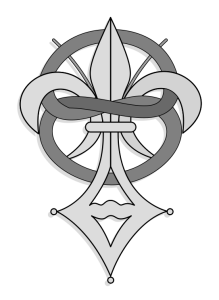
_________________
Everything is Connected and there are no
coincidences
|
|
|
|
Réponse |
Message 17 de 31 de ce thème |
|
|
|
|
Réponse |
Message 18 de 31 de ce thème |
|
|
De: Ginana |
Envoyé: 15/05/2023 10:20 |
Slot pg online game, outstanding with 3D graphics, exciting background music. Paylines like no other There are more than 200 games to play freely. You can play slot games without getting bored for sure here. |
|
|
|
Réponse |
Message 19 de 31 de ce thème |
|
|
|
|
Réponse |
Message 20 de 31 de ce thème |
|
ISLA SAN GIORGIO (VENECIA)=GEORGE LEMAITRE
Just after midday on July 22, 1946, Zionist terrorists, under the leadership of Menachem Begin, set the fuses on bombs planted in the basement of the King David Hotel in Jerusalem. At 12:37 a huge explosion ripped through the building, killing 91 people. Among the dead were 25 Britons, 41 Arabs, and 17 Jews.
|
|
|
|
Réponse |
Message 21 de 31 de ce thème |
|
|
|
|
Réponse |
Message 22 de 31 de ce thème |
|
|
|
|
Réponse |
Message 23 de 31 de ce thème |
|
|
|
|
Réponse |
Message 24 de 31 de ce thème |
|
Taste the current. arselectronica
Picture a reclusive man, dripping with sweat all night in a dark lab, illuminated only by crackling sparks that periodically leap from enormous machines and cast a purple glow across his face. This was Nikola Tesla, the archetype of the mad scientist. His inventions fill the world around us; they are instrumental to our modern electrical grid. They are quiet, reliable, invisible machines.
Perhaps his most famous invention is the Tesla coil – a contraption that produces beautiful flying arcs of electrical energy. It was invented by Tesla in an attempt to transmit electricity wirelessly.
Transformer in action
The principles behind the Tesla coil are relatively simple. Just keep in mind that electrical current is the flow of electrons, while the difference in electric potential (voltage) between two places is what pushes that current. Current is like water, and voltage is like a hill. A large voltage is a steep hill, down which a stream of electrons can rapidly flow. A small voltage is like a near-flat plain with almost no water flow.
The power of the Tesla coil lies in a process called electromagnetic induction. This is where a changing magnetic field creates a voltage that compels current to flow. In turn, the flowing electric current generates a magnetic field. When electricity flows through a wound up coil of wire, it generates a magnetic field that fills the area around the coil in a particular pattern.
Electricity flowing through a wound up coil produces this kind of magnetic field. Photo modified by XX from Los Alamos National Lab
Similarly, if a magnetic field flows through the centre of a coiled wire, a voltage is generated in the wire, which causes an electrical current to flow.
The voltage (“hill”) generated in a coil of wire by a magnetic field through its centre increases with the number of turns of wire. A changing magnetic field within a coil of 50 turns will generate ten times the voltage of a coil of just five turns. (However, less current can actually flow through the higher potential, to conserve energy.)
This is exactly how a common alternating current (AC) electrical transformer, found in every home, works. The constantly fluctuating electric current flowing in from the power grid is wound through a series of turns around an iron ring to generate a magnetic field. Iron is magnetically permeable, so the magnetic field is almost entirely contained in the iron. The ring guides the magnetic field (in green to the right) around and through the centre of the opposite coil of wire.
Electrical transformer in action. BillC, CC BY
The ratio of coils on one side to the other determines the change in voltage. To go from 120V household wall voltage to, say, 20V for use in a laptop power adaptor, the output side of the coil will have six times fewer turns to cut the voltage to one sixth its original level.
How the coil rolls
Tesla coils do the same thing, but with a much more dramatic change in voltage. First, they employ a pre-made high voltage iron core transformer to go from 120V wall current to roughly 10,000V. The wire with 10,000 volts is wrapped into a large (primary) coil with only a handful of turns. The secondary coil contains thousands of turns of thin wire. This steps up the voltage to between 100,000 and 1,000,000 volts. This potential is so strong that the iron core of a normal transformer cannot contain it. Instead, there is only air between the coils.
The Tesla coil requires one more thing: a capacitor to store charge and fire it all in one huge spark. The circuit of the coil contains a capacitor and a small hole called a spark gap. When the coil is turned on, electricity flows through the circuit and fills the capacitor with electrons, like a battery. This charge creates its own electric potential in the circuit, which tries to bridge across the spark gap. This can only happen when a large amount of charge has built up in the capacitor.
Eventually so much charge has accumulated that it breaks down the electrical neutrality of the air in the middle of the spark gap. The circuit closes for a fleeting second and a huge amount of current blasts out of the capacitor and through the coils. This produces a very strong magnetic field in the primary coil.
The secondary wire coil uses electromagnetic induction to convert this magnetic field to an electric potential so high that it can easily break apart the air molecules at its ends and push their electrons in wild arcs, producing enormous purple sparks. The dome on the top of the device acts to make the secondary coil of wires receive energy more fully from the first coil. With some careful mathematical calculations, the amount of electrical energy transferred can be maximised.
Flying blue streamers of electrons flow off the coil and through the hot air searching for a conductive landing place. They heat the air and break it into a plasma of glowing ion filaments before dissipating into the air or surging into a nearby conductor.
A tremendous light show is generated, as well as a loud buzzing, crackling sound, which can be used to play music. The electrical theatrics are so stunning that Tesla was known to use his device to scare and mesmerise visitors to his lab.
Tesla might not have invented a source of unlimited power, which was one of his goals, but he did design a brilliant machine to demonstrate the sheer power and beauty of electricity.
https://theconversation.com/explainer-what-is-a-tesla-coil-22723 |
|
|
|
Réponse |
Message 25 de 31 de ce thème |
|
|
|
|
Réponse |
Message 26 de 31 de ce thème |
|
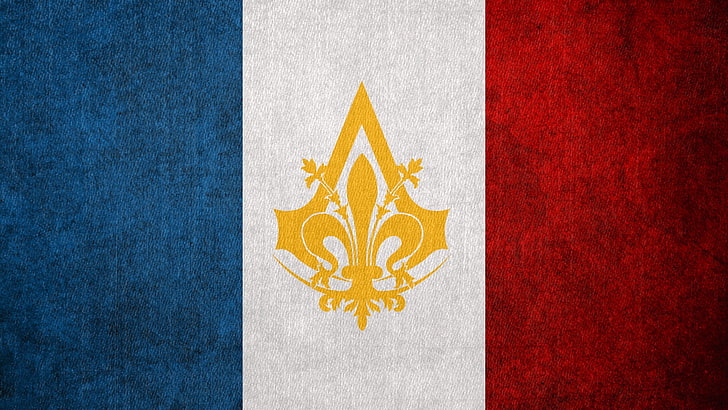 yellow Fleur-de-lis clip art, Assassin's Creed, France, flag, HD wallpaper |
|
|
|
Réponse |
Message 27 de 31 de ce thème |
|
Serket
Serket /ˈsɜːrˌkɛt/ (Ancient Egyptian: srqt) is the goddess of protection against the venomous stings and bites of scorpions in Egyptian mythology. [2] She was primarily worshiped in Lower Egypt during the Predynastic Period (c. 6000 - c. 3150 BCE). Serket is often depicted as a woman whose head is surmounted by a scorpion with its tail is ready to sting, an ankh in one hand, and a was-sceptre in her other. Her name, also rendered as Serqet, Selkis, or Selket, is a shortened version of 'Serket hetyt' which means "she who causes the throat to breathe."[3]
She is associated with healing, magic, and protection. Another interpretation of her name is, 'she who gives breath.' As many of the venomous creatures of Egypt could prove fatal, Serket was considered a protector of the dead, particularly being associated with venoms and fluids that cause stiffening.
It has been suggested that Serket's identification with a scorpion may be a misinterpretation of the phrase, 'she who gives breath'; it is possible that it could refer not to a scorpion, but rather a water scorpion (Nepidae). According to this hypothesis, the meaning behind Serket's name refers to the way water scorpions can breathe underwater. She was seen as one who could cure scorpion stings and the effects of other venoms such as snakebites. As such, Serket was often said to protect the deities from Apep, the great snake-demon of evil.
During the Old Kingdom she held a protective role around the throne of the king. However, her primary role was with the funerary cult. She was said to be the protector of the tents of embalmers and is one of the tutelary goddesses depicted on the canopic chest which contains four canopic jars. Qebehsenuef, is said to guard the canopic jars and it is Serket's job to protect him along with Neith, Isis, and Nephthys.[4] This role also coined her the title of 'Mistress of the beautiful house,' referring to the embalming pavilion. [5]
Eventually, Serket began to be identified with Isis, sharing imagery and parentage, until finally, Serket was said to be merely an aspect of Isis, whose cult had become dominant.
During the Middle Kingdom, Egyptian myth says that Serket's help is required in the Underworld where according to the Book of the Two Ways she guards a twist in the pathway.[6] She is also given credit for binding and containing the snake deity, Apophis (or Apep). [7]
Serket was thought to be one of the mother goddesses and was given the title, 'Serket the great, the divine mother.' [8] According to history of the Near East, the scorpion was often seen as a symbol of motherhood. As early as the Old Kingdom, Serket is said to have nursed the king. In the New Kingdom records of the birth of Amenophis III (or Amenhotep III) in the Luxor Temple, and in the mortuary temple of Hatshepsut, Serket is seen with Neith assisting the god Amun and the queen in the marriage bed.[8] She has also appeared with Nephthys in the myth of the birth of Horus where the two goddesses assisted Isis in protecting the infant god from the bites or stings of deadly animals. In the same myth, Isis and her unborn child are protected by seven scorpions said to be emanations of Serket. [8]
Dedications and Rituals
[edit]
The cult of Serket is known to have existed from at least the First Dynasty, and is attested on a funerary stela from Saqqara. The majority of her worship was seen during the Old Kingdom. She is not known to have had any temples erected in her honor, yet she was an important goddess to the kings of the Predynastic Period, particularly Scorpion I and Scorpion II, for her protection against the deadly, venomous animals of Lower Egypt.
In January 2025 a group of French-Swiss archaeologists discovered the tomb of the chief palace physician in Saqqara, named Tetinebefou. In his temple there is reference to the goddess Serket in that Tetinebefou was said to be the 'director of medicinal plants and conjurer of the goddess Serket.'[10] Aside from this discovery, and although Serket is said to have powers that can be utilized by the living for healing venomous bites, she is rarely included in spells concerning scorpion stings.
Little is known of her genealogy, but she is sometimes credited as the daughter of Neith and Khnum, making her a sister to Sobek and Apep.[citation needed]
Some myths depict her as the mother of Nehebu-Kau.
|
|
|
|
Réponse |
Message 28 de 31 de ce thème |
|
|
|
|
Réponse |
Message 29 de 31 de ce thème |
|
MICHELLE ONG | CARNET JEWELRY
Here at Victoria Peak in Hong Kong, China, we have an incredible, pa noramic view of Victoria Harbour and all of the lofty buildings standing sharply along the shoreline. China is also home to featured jewelry designer Michelle Ong. If you have seen the film The Da Vinci Code, you are undoubtedly aware of the film's intriguing yet radical concepts. The film also introduced an item instrumental to the plot: the Fleur de Lis Cross Key used by actor Audrey Tatou's character to retrieve a safe deposit box.
What does this have to do with Ong? Here's a bit of trivia: Ong, through her company Carnet Jewelry, designed and created the key used in the film. Ong's unflinching purposefulness, focus, and independence are rather intimidating. The offspring of doctors, Ong learned about gemstones while working as an apprentice for a diamond importer, who was also a family friend.
Ong's interest in gemstones developed into experimenting with designs and through sheer intuition she began to create items for her personal use. Because she didn't want her creativity inhibited, Ong never obtained formal design training, "There's no fear. I have no restrictions," she says. In 1985, she formed a partnership with Israeli gem dealer, Avi Nagar and they founded Carnet Jewelry; Ong serves as Creative Director. When talking about jewelry I am hard pressed to find adjectives other than 'spectacular' or 'beautiful' to describe a piece. I don't think there are other words to be honest so I can't help sounding redundant.
|
Tom Hanks and Audrey Tatou (left); and Fleur di Lis Key (right)
from The Da Vinci Code (Fleur di Lis Key by Carnet Jewelry |
Many of Ong's beautiful designs reflect the femininity and delicacy customary of Eastern designs yet they possess a bold complexity as well. Her brooches and necklaces are intricate and ornate featuring stones such as emeralds, rubies, diamonds, and garnets. Others are a bit more understated but equally breathtaking. Many of her necklace designs are akin to lace patterns. One floral-inspired necklace took four years to make.
The brand’s labor-intensive philosophy to produce a piece is largely due to Ong’s very precise and protective attitude towards her designs. She does not like selling her wares to individuals who want her pieces solely for their bling-bling aspect holding dear the artistic value of her work.
"To buy this kind of jewelry, you need to be a little bit educated, sophisticated. You need to be interested in work and design and not just flash." Ong's designs are made in limited quantity as she follows a strict work ethic: she designs only when inspired and she will not sell any creation that she does not consider high quality.
Her designs have been exhibited in London, Hong Kong, and the United States gaining the attention of upscale jetsetters, and Hollywood celebrities. Kate Winslet and Glenn Close are just a sampling of the famous clientele who have worn her stately fine jewelry.
In 2007, Carnet Jewelry opened a store in Bergdorf Goodman, which features rare, artisan designs, and Ong's creations have been eagerly received.
Interested in officialy licensed prop replicas from The Da Vinci Code? The Noble Collection produces several fuctional items based on the Cryptex. _________
Photo 1 (top right): Floral-inspired necklace with black/white diamonds, rubies, emeralds, garnets, and pink sapphires
Photo 2 (bottom left): Brooch with white/brown diamonds
|
|
|
|
Réponse |
Message 30 de 31 de ce thème |
|
"Fleur de Lys Cross Key" from the movie "Da Vinci Code" designed by Hong Kong jewelry designer Michelle Ong are displayed at a shopping mall to promote the film in Hong Kong Friday, May 12, 2006. The movie will show on screen on May 18. (AP Photo/Kin Cheung)
Captions are provided by our contributors.
|
|
|
|
Réponse |
Message 31 de 31 de ce thème |
|
key prop from the movie?


https://langdonsworld.com/the-da-vinci-code/ |
|
|
 Premier Premier
 Précédent
17 a 31 de 31
Suivant Précédent
17 a 31 de 31
Suivant
 Dernier
Dernier

|
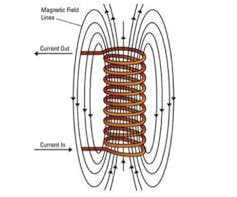







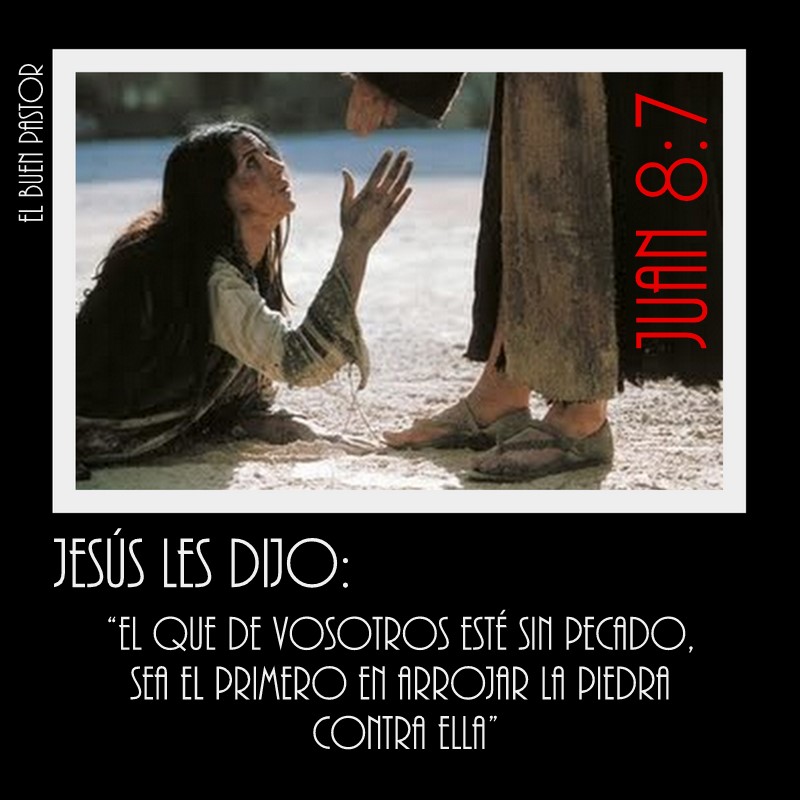






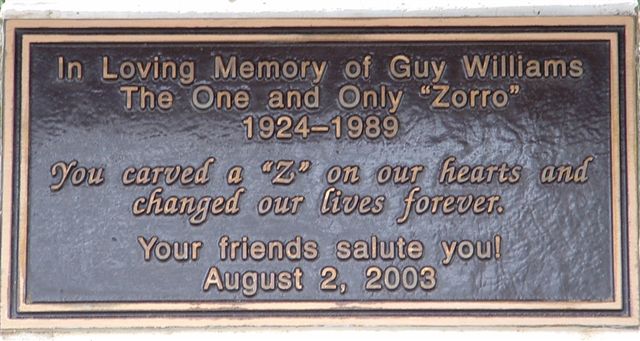




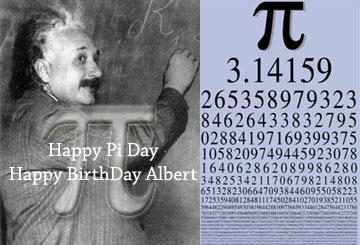



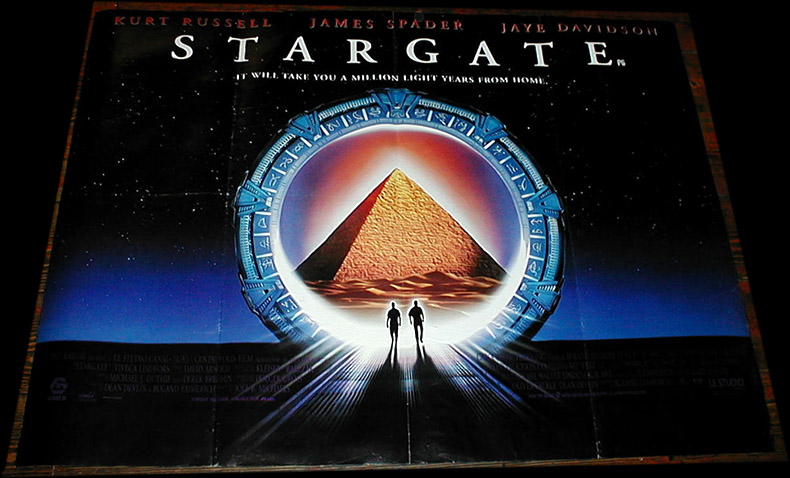












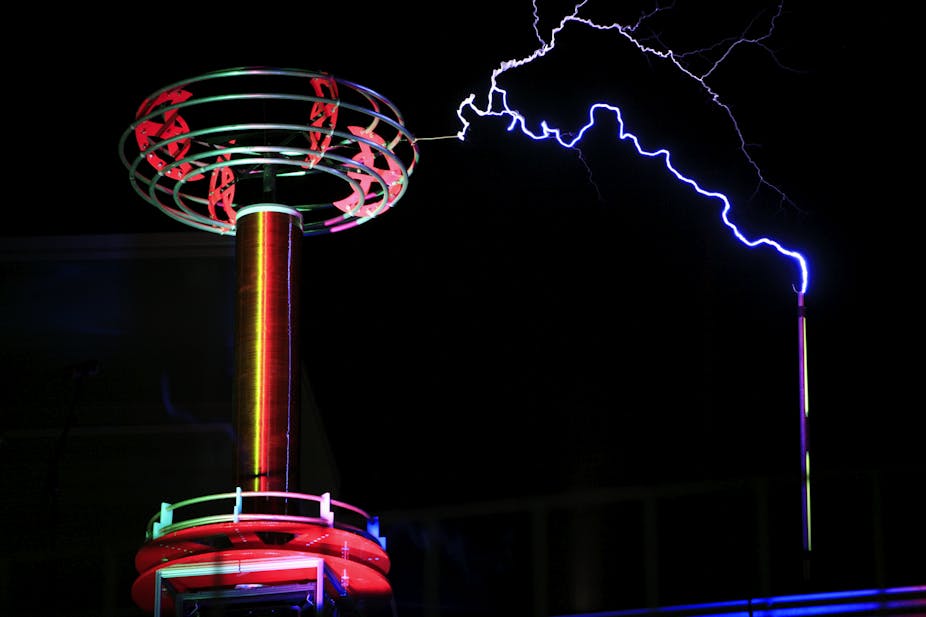

 yellow Fleur-de-lis clip art, Assassin's Creed, France, flag, HD wallpaper
yellow Fleur-de-lis clip art, Assassin's Creed, France, flag, HD wallpaper